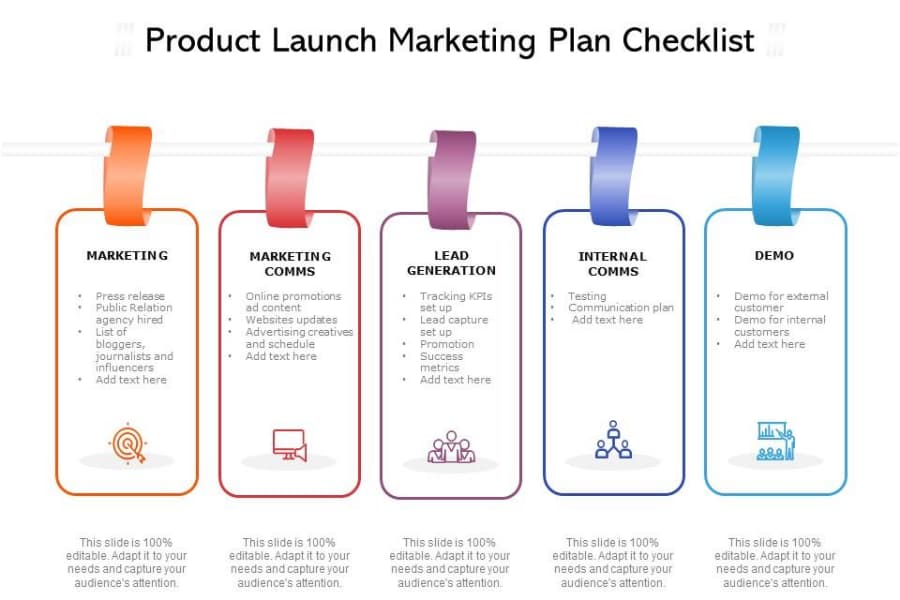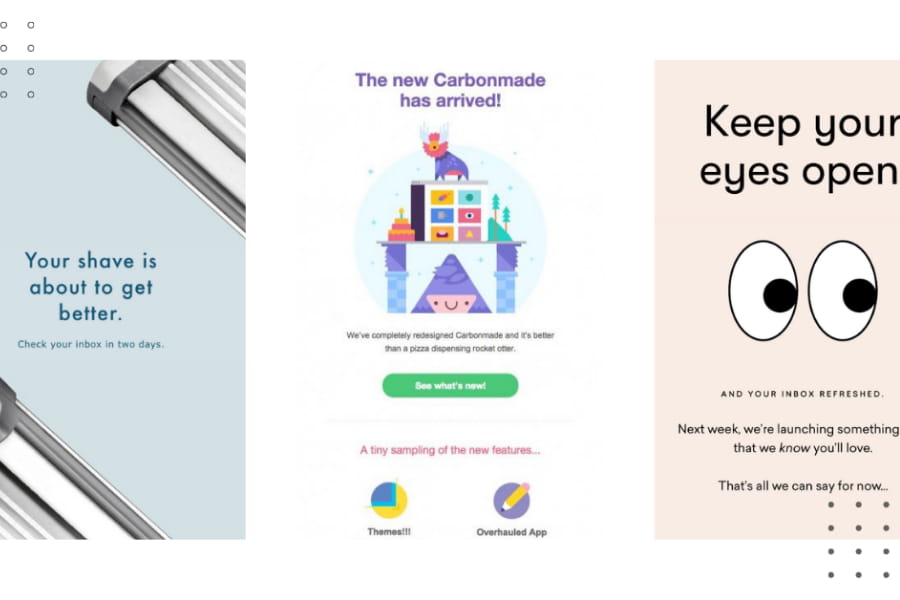A successful product launch can significantly boost your brand’s visibility and profitability, but it all starts with a well-thought-out product launch marketing plan. Whether you are launching a new app, product, or service, your marketing strategy is critical in building momentum, engaging your audience, and driving sales.
In this guide, we’ll break down how to create an effective marketing plan for a new product launch, discuss its stages, and highlight real-life examples of successful product launch marketing plans to inspire your journey.
What is a Product Launch Marketing Plan?
A product launch marketing plan is a comprehensive strategy outlining how you will promote and bring a new product to market. It’s an essential roadmap to ensure that every marketing effort syncs with your product’s launch objectives. This plan covers everything from pre-launch promotion to post-launch follow-up, and it includes various tactics such as digital marketing, PR, event marketing, and social media campaigns.
Every new product marketing plan should be tailored to your target audience, the nature of the product, and your company’s broader marketing goals. By defining key performance indicators (KPIs), establishing timelines, and outlining communication strategies, your team can effectively manage the launch and track its success.

The Importance of Creating a Marketing Plan for a Product Launch
Creating a solid marketing plan for a new product launch is crucial for several reasons:
-
Ensure Cohesion: A complete marketing plan helps align all departments, ensuring sales, marketing, product, and PR teams work towards the same goal.
-
Build Awareness: A structured product launch plan allows you to generate excitement before the product is even available, which helps build momentum for the actual launch.
-
Drive Engagement: An organized marketing plan for a new product launch ensures that your target audience engages with the product at the right time, through the right channels.
-
Track Performance: By setting clear objectives, metrics, and KPIs, your marketing plan for new product launch sample allows you to track success and make adjustments if necessary.
Without a well-structured marketing plan, you risk underwhelming your audience, misaligning efforts, and missing out on potential sales.
What Stages Does a Marketing Plan for a New Product Launch Include?
A successful new product launch marketing plan is typically divided into three key stages: before, during, and after the launch.
Before the Launch
The pre-launch stage is critical in creating awareness and building anticipation. Your before the launch marketing plan should include:
-
Market Research: Understand your target audience, competition, and the market demand for your product.
-
Content Creation: Develop promotional materials such as teaser videos, blog posts, and social media content to build interest. The materials could be fully detailed product launch slides presented at the product launch event to the public.
-
Public Relations (PR): Create product introduction press releases and connect with influencers and media outlets to help spread the word.
This phase sets the foundation for a successful launch by ensuring your audience is aware, interested, and eager to engage when the product becomes available.
During the Launch
The launch stage is all about maximizing exposure and driving conversions. During this phase, your launch marketing plan might include:
-
Product Launch Event: Hosting a physical or virtual event to introduce the product to your audience.
-
Social Media Campaigns: Leverage platforms like Instagram, Facebook, TikTok, or professional media like LinkedIn to create buzz and share live updates.
-
Product Launch Email Marketing: Notify your email list about the product’s release and offer special promotions or discounts to encourage early adopters.

This is where all your marketing efforts come together to create a memorable launch experience for your audience.
After the Launch
The post-launch phase focuses on maintaining momentum and driving long-term engagement. Your after-the-launch marketing plan should include:
-
Customer Follow-up: Send thank-you emails, offer additional resources, and encourage feedback to retain customers.
-
Data Analysis: Review performance metrics, such as website traffic, sales, and social media engagement, to evaluate the launch’s success.
-
Ongoing Marketing: Keep the product top-of-mind by continuing to promote it through retargeting ads, content marketing, and influencer partnerships.
Post-launch activities are essential to nurturing relationships with early adopters and driving sustained interest in your product.
Steps to Create a Product Launch Marketing Plan
Now that we’ve covered the stages, let’s dive into the actionable steps required to create a product launch marketing plan:
1. Conduct Market Research
Understanding your market is the first step in any marketing plan for a new product launch. Who are your competitors? What is your target audience looking for? By answering these questions, you’ll be better equipped to craft messaging that resonates with your audience.
2. Define Your Target Audience
Tailoring your marketing plan to your ideal customer is crucial. Define your target audience’s demographics, interests, and pain points, then create messaging and content that speaks directly to them.
3. Set Clear Goals and KPIs
Set measurable goals to gauge the success of your product launch. Whether it’s generating a specific number of leads, reaching a certain amount of sales, or growing brand awareness, having clear objectives will guide your marketing efforts.
4. Develop Messaging and Positioning
How you present your product to the market can make or break its success. Focus on developing a compelling value proposition and messaging that highlights the product’s benefits and solves a problem for your audience.
5. Create a Content Calendar
Your product launch marketing plan should include a detailed content calendar that maps out every piece of content, from blog posts to social media updates. This ensures consistent communication with your audience leading up to the launch.
6. Plan Promotional Campaigns
Whether you’re leveraging email marketing, social media ads, influencer partnerships, or SEO, your new product launch marketing plan should outline specific campaigns designed to reach your audience where they spend their time.
7. Set a Budget
Every successful sample product launch marketing plan includes a clear budget. Allocate resources for paid ads, events, content creation, and other promotional activities. Ensure your budget aligns with the goals you set earlier.
8. Choose the Right Channels
Identify the best platforms for reaching your audience. Social media, email marketing, influencer marketing, and PR efforts are all channels that can amplify your launch.
9. Organize a Launch Event
Hosting a product launch event can generate excitement and media attention. VietnamEvent specializes in organizing product launch events, ensuring every detail - from concept to execution - runs seamlessly.

10. Monitor and Adjust
Once your product launch marketing plan is in action, continuously monitor its performance. Use data analytics to track your KPIs and adjust your product launch strategy if needed to improve results.
Examples of Successful Product Launch Marketing Plans
Many brands have executed creatively new product launch marketing plans that can serve as inspiration for your launch. Here are a few examples:
1. Apple iPhone Launch:
Apple’s product launches are legendary for their secrecy and anticipation-building. Their marketing plan relies heavily on teaser campaigns, exclusive media coverage, and keynote events that build hype.

2. “On the Way to Lemonade Office” Lipstick and Cream Blush Launch:
Lemonade Cosmetics, a fast-growing Vietnamese beauty brand, took a creative approach to launch its new lipstick and cream blush collection in November 2024. The event was designed around a “workplace” theme, where attendees became "interns" for a day.
Participants moved through different “departments” that represented various stages of the business, interacting with new product launch samples along the way. This experiential marketing approach allowed attendees to get hands-on with the products while feeling immersed in the brand’s story, creating a memorable and engaging launch experience.

3. Roadshow Robo Inu in Vietnam:
Robo Inu Finance, a Singapore-based company, marked its business launch for the first time in Vietnam. As a leading event organizer, VietnamEvent came up with this marketing plan as a roadshow event using bicycles with the attached company logo, creating a lively atmosphere for bypassers.

Each of these companies used traditional and digital marketing techniques to make their product launches memorable and drive significant results.
>> Read more: Examples of Successful Product Launch Events
Conclusion
A well-executed product launch marketing plan can be the difference between a product that fades into obscurity and one that makes a lasting impact. By following the steps outlined in this guide, you can craft a strategic plan that builds excitement, engages your audience, and ensures a successful launch.
At VietnamEvent, we understand the complexities of product launches. Our expert product launch services can help you design a standout launch experience, ensuring that your product is introduced to the market effectively during the next product launch.
--------------------------------------------------------------------------------
Contact information:
Vietnam Event | Local Brand - Global Expert
Hotline/Mobile/Whatsapp: (+84) 913 929 182 - (+84) 918 640 988
Email: annie@vietnamevent.com
- 29 Doan Thi Diem str., Dong Da dist., Hanoi
- 217 Tran Phu str., Hai Chau dist., Danang
- 5 Hoa Cau str., Phu Nhuan dist., Ho Chi Minh City
- Others: Singapore


